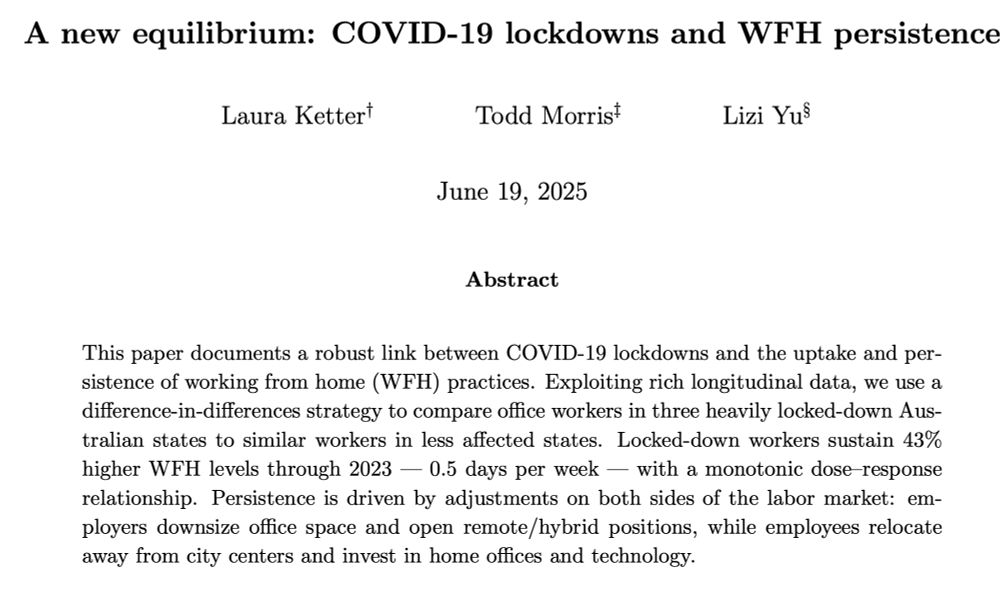
- Employers appear to downsize office space & are more willing to offer WFH options
- Workers appear to invest in home offices and move further from city centers.
These adjustments have locked in WFH habits.


- Employers appear to downsize office space & are more willing to offer WFH options
- Workers appear to invest in home offices and move further from city centers.
These adjustments have locked in WFH habits.
Fully remote work is less persistent, but partial WFH remains common — especially in NSW and Victoria.
The stronger the lockdown, the greater and more persistent the WFH shift.

Fully remote work is less persistent, but partial WFH remains common — especially in NSW and Victoria.
The stronger the lockdown, the greater and more persistent the WFH shift.
By 2023, workers in heavily locked-down states were still working from home 43% more (or an extra half a day p/w)

By 2023, workers in heavily locked-down states were still working from home 43% more (or an extra half a day p/w)
- Victoria: 206 extra lockdown days than control states
- NSW: 90 extra days
- ACT: 46 extra days
We use this natural experiment to study long-run WFH effects.

- Victoria: 206 extra lockdown days than control states
- NSW: 90 extra days
- ACT: 46 extra days
We use this natural experiment to study long-run WFH effects.
A thread 👇
Link: drive.google.com/file/d/1KAf3...

A thread 👇
Link: drive.google.com/file/d/1KAf3...

